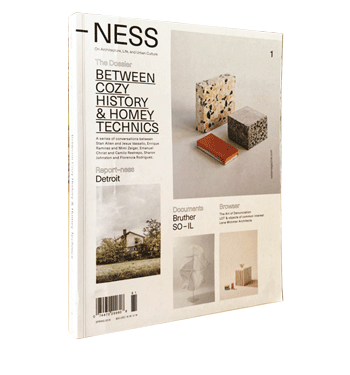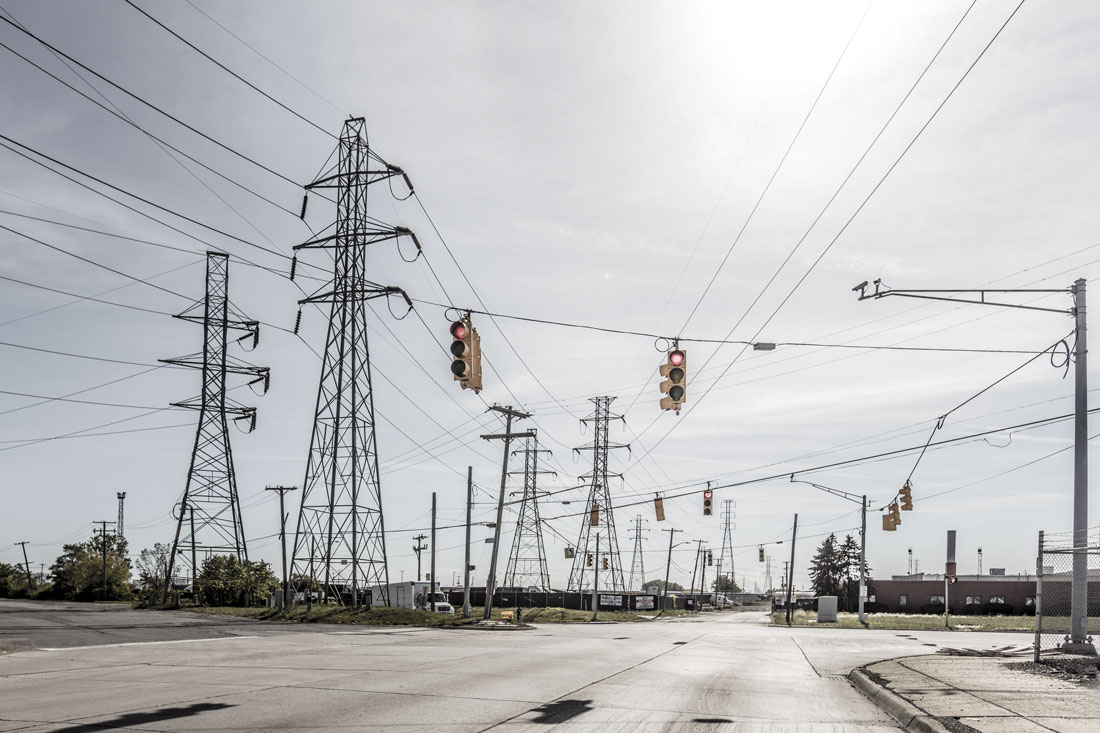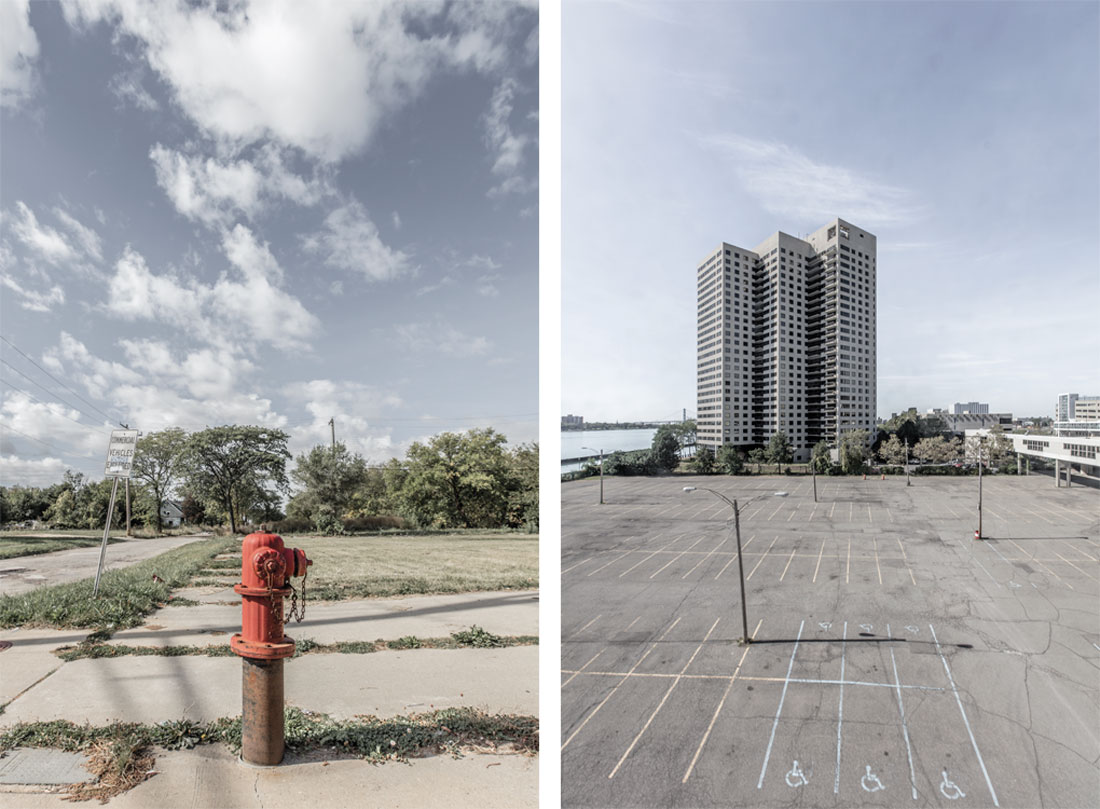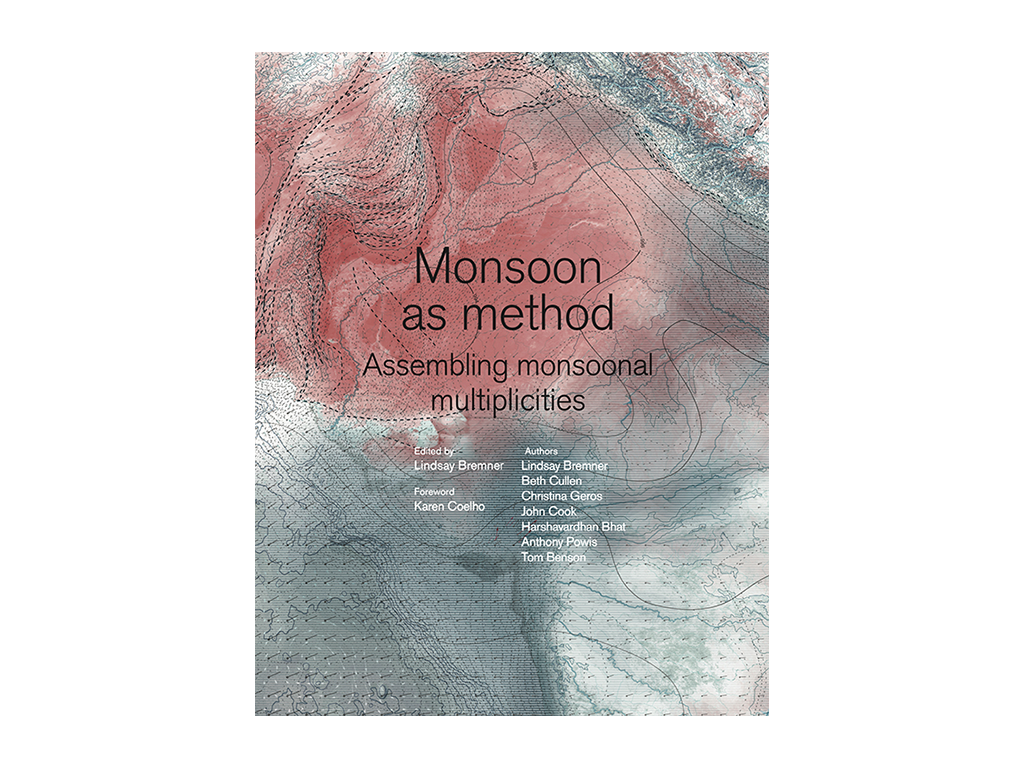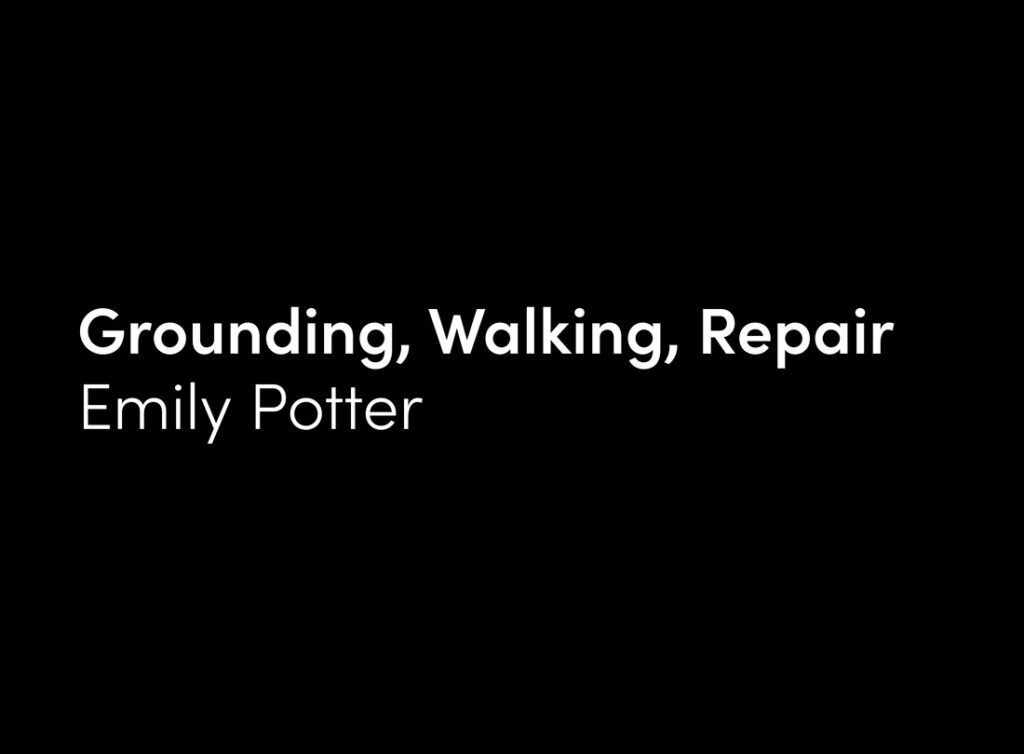For a casual observer, one who blithely follows the news, the mere mention of the city of Detroit evokes images of a post-industrial landscape. Detroit, the familiar story goes, was the backbone of the U.S. industrial age, the home to the nascent automobile industry, and the celebrated ‘arsenal of democracy’ during World War II. Fifty years later, the city was the graveyard of a declining industrial era, a symbol of urban crisis. Indeed, over the last several years, the national and international press has taken interest in the tragic fate of the Motor City. While some detail the deteriorated landscape and illustrate its fall from grace with photographs of a seemingly deserted city, others have suggested it to be a space uniquely poised for reinvention and open to new investments.
Yet, as historians like Thomas Sugrue and Beth Tompkins Bates[1] have shown, the experience of crisis in Detroit has been, and continues to be, more complex than the simplistic narratives of industrial decline and burgeoning investment often allow us to believe. Terms like ‘revitalization’ and ‘urban renewal’ have complex and controversial pasts. Certainly, Detroit is a city that has lived many lives, that has been reformulated and recreated by the people and the industries that it has housed. It is, likewise, a city that has endured considerable strife, tensions, and dire inequalities, among its residents and at the hand of problematic policies. These experiences color the city’s past as much as its future, provoking ongoing questions about the moral, economic, cultural, and racial ramifications of present-day decisions. At the same time, they also underline that the singular constant in Detroit’s history has been a powerful, and sometimes painful, state of reinvention.
Even before Detroit was Detroit, it was an area of land that seemed to perpetually change hands. The frontier town, once home to a number of indigenous tribes, became a French settlement in 1701, was taken over by the British after the French and Indian War, won to the United States in the American Revolution, and briefly retrieved by the British in 1812, only to be re-incorporated into U.S. territory shortly thereafter. By the beginning of the 19th century, it was a city that would be defined by both its diversity and its spirit of resilience. When the city caught fire in June 1805, it was nearly completely destroyed. As residents worked to rebuild and develop a new, more modern urban plan, the idea of renewal became emblazoned on the city flag: “Speramus meliora; resurgent cineribus,” reads the city’s prophetic motto: “We hope for better things; it shall arise from the ashes.”
So it did. Detroit grew in size and in stature in the 19th century, becoming a hub for European immigrants, as well as commercial entrepreneurs and industrialists who reaped the benefits of the Gilded Age. The new rich of Detroit built Victorian mansions along East Jefferson, many of which still stand today. By the Civil War, a small but important Black community grew in size. Detroit’s proximity to Canada, where slavery was illegal since 1834, made the city a significant stop on the Underground Railroad. Yet, despite its location in a free territory, Detroit saw entrenched tensions grow between its European immigrant and Black residents during the war. Dailies like the “Detroit Free Press” stoked immigrant communities to view Black residents as competition for jobs, and suggested that the end of slavery would garner labor competition from free Blacks. German and Irish Catholics rioted in protest of a draft into the Union Army in 1863, marking the first in what would be a long line of racially-driven conflicts.
It was not until the 20th century that Detroit would truly grow in size and stature, not only rising rapidly in terms of population, but garnering a special status in the American imagination. In 1896, Henry Ford constructed his first automobile in Detroit, and after a few false starts, in 1903, he began the company that would change the landscape of the city. Ford’s cars and their style of manufacturing introduced several innovations to both U.S. industry and consumer culture: his Model T automobile, manufactured in Highland Park, was built using a moving assembly line, a style of production that transformed the industry by boosting output, economizing production, and cementing Detroit’s future as the new hub of the automobile industry. Model Ts could be quickly produced at accessible prices.
The labor conditions of the assembly line, however, were quite grueling—turnover was high and competition with other factories, like General Motors, also in Detroit, quickly generated challenges for the company. Thus, it was not until Ford put in place another business innovation that Detroit became a mythologized destination for those in search of the American Dream. In a move that bypassed union negotiations and put emphasis on production and the bottom line, Ford doubled the pay of laborers to five dollars per day and vastly improved conditions of contract. The factory work was still taxing, but working at Ford meant an eight hour work day and a forty hour work week—luxuries in a pre-labor legislation era. Production skyrocketed and consumer spending grew.
News of the famous $5 work day spread quickly. Migrants and immigrants poured into the city. As a result, Detroit’s racial and cultural diversity likewise blossomed. The city’s population grew from a mere 265,000, in 1900, to more than 1.5 million by 1930. The vast majority of laborers were white migrants and immigrants from Europe, but Ford and other Detroit companies also became famous for hiring Black workers, though they were hired often for more menial positions and in segregated stations. Ford’s particularly esteemed reputation in the Black community, Thompkins Bates reminds us, was largely due to the number of jobs open to Black workers and its pay, rather than the quality of those positions or potential for promotion. Nevertheless, the opportunity meant that Detroit would become a destination during the Great Migration, when thousands of Black men and women left the South in search of improved opportunities in the northern industrial cities. The population particularly boomed during World War I, when immigration stalled and new opportunities for work opened up for people of color. The Black population in Detroit rose from 5,800 African Americans in 1910 to nearly 41,000 in 1920—a number that would continue to grow over the following years.
Growth in numbers, however, did not necessarily mean that Detroit’s neighborhoods became more diverse or equitable. The city’s geography was racially divided. Black Bottom, named for the richness of its soil, was located on the city’s East Side and was home to most of the city’s Black residents. Racist policies confined Black migrants to the area. Hastings Street, a hub for Black businesses, became a lively epicenter of Black culture. In housing, labor, law enforcement, education, and daily life, racism was a powerful and everyday reality for the growing community.
At the same time, the competitive pay, powerful unions, and the expansion of the automobile industry in the twenties, made the auto industry, for whites in particular, a place for socioeconomic mobility: it spurred consumer culture, making the laborers themselves able to afford the products they produced. Vast middle and professional classes also developed. The city’s landscape mimicked these changes, and the skyline showed signs of the wealth that arrived via the automobile industry. A few new modern apartment buildings were built in the twenties and the city celebrated the construction of new skyscrapers, like the Landmark Guardian Building and the Fisher Building, downtown. Bustling shopping districts served a growing consumer base. Among these were the flagship J. L. Hudson Department Store: Hudson’s, as it was known, boasted a massive floor space that was only rivaled by Macy’s in New York. It became an icon of the mid-century Detroit experience. Notably, its expansion to the suburbs in 1954, the building’s closure and 1983 and subsequent demolition in 1998, likewise serve as popular markers of downtown decline.
As one might expect, the depression hit Detroit’s economy hard. Production faltered and declined in the thirties; but again, the city revived. Unions, strengthened in the thirties, mobilized and achieved important gains for auto industry workers. By 1940, just prior to official U.S. entry into World War II, the city went back to work: the auto plants were quickly converted into armament factories, and residents—men and women—were trained to build tanks, military hardware, and planes. Detroit expanded as the ‘arsenal of democracy.’ Unemployment plummeted. At the same time, however, racism simmered. Even while the Black community benefited from new wartime employment opportunities, several New Deal policies were driving up inequalities and reinforcing a racist urban structure. Among these was the practice of redlining. In 1934, the Federal Housing Authority was formally established and with it, a number of policies were put in place that sought to generate growth by offering investments in homeownership. The policies also, however, rated neighborhoods as areas of investment; due to their poor ratings, Black neighborhoods like Black Bottom were ‘red-lined,’ they were excluded from development and, moreover, white neighborhoods were further incentivized to exclude Black residents from moving in. With investments in Black neighborhoods halted, conditions worsened: the single family homes that so typically dominated the landscape were becoming overcrowded, converted into apartments, all while still lacking some basic services.
As the housing shortage continued and Black laborers made more headway in the defense industry, conflict erupted. In 1941, Detroit broke ground on two sets of public housing buildings intended to provide relief for the housing shortage: one was intended to be for white laborers, and a second, the Sojourner Truth Housing project, for Black residents. As both were located in predominantly Polish neighborhoods, white residents protested, mobilizing in opposition of Black housing outside of a Black neighborhood. Klu Klux Klan members rallied around the issue, intimidating Black families from moving into buildings. Several Black families moved in despite the violence. Segregation practices continued as did racial tensions, which again erupted into violence in 1943, during a more prolonged episode of conflict. Meanwhile, the city continued to appear to herald a new era of production, churning out tanks, airplanes, and equipment for the war effort.
When the city turned back to automobiles in the postwar era, there were new engines driving the city’s production: a prosperous postwar American economy that invited new innovations and a car-crazed culture bolstered by federal initiatives to build up the U.S. highway system. The social, economic and cultural impact of highway build-up across the United States was pronounced, and in Detroit, the effects reverberated into almost every aspect of urban life. For one, highway construction offered an important boost to the automobile industry; the growth of suburbs and commuter culture required middle class families to double their car ownership. At the same time, construction also opened up new spaces, outside the city limits, for factories and affordable new homes. Detroit itself, then, became forever changed. Hudson’s—the emblematic department store downtown—opened up a new shopping center outside the city limits in 1954. Factories also moved, building new facilities along the highway. And, of course, many of Detroit’s residents followed. New suburban developments offered more space outside the city. The Detroit suburbs became a picture of the American Dream.
But it was a dream inaccessible to some. The repercussions of this era of suburbanization were manyfold, and the causes and nature of ‘white flight’ were not merely a question of a changing lifestyle. While 1954-1956 signal the beginning of the era of suburbanization, they also mark the first years in which the Supreme Court decision, Brown vs Board of Education, which deemed racial segregation in U.S. schools unconstitutional, was enforced in U.S. schools. In the several years following the decision, cities and towns across the country were forced to integrate their schooling systems. In light of this new mandate, white flight out of American cities did not only imply a movement to larger houses with two car garages, but also a new form of de facto segregation. The new suburban neighborhoods put in place policies to exclude Black homeownership. While some white suburbanites were explicit about their desire for exclusively white communities, others posed segregation in economic terms, convinced that integrated communities would drive down property values and endanger the post-war prosperity. Middle class Black families, desiring to move beyond the lower-quality housing in the city’s deteriorating Black neighborhoods, found perpetual roadblocks and discrimination.
Suburbanization and highway construction also came with new initiatives at ‘urban renewal’ that largely targeted the severely declined Black Bottom neighborhood. The famed Hastings Street, a center of Black community, was demolished. Black Bottom was controversially razed, leaving it undeveloped for years, and turning portions over to highway development. Low-income residents were moved to housing projects elsewhere in the city. New developments, built in the sixties, sought to keep the city’s middle classes from exiting the city, but white flight continued for the following decades, with the white population declining to 55% by in 1970 and a mere 34% in 1980. Though some cite the violent 1967 riots as inciting the final exodus of white Detroiters, others note that other factors, including a failed mandate to desegregate the Detroit metropolitan area’s schools, played a formidable role. The exodus also meant that tax revenue continued to plummet, and in turn, city revenue for the maintenance of public structures and development declined. Even Motown, the famed record label that bore the city’s name and its legacy, picked up and moved to Los Angeles.
The downwind in the local economy was only hastened by a broader process of deindustrialization in the U.S. auto industry, and made more severe by rising crime, unemployment and poverty. An epidemic of crack addiction, corruption, and a rise in gang violence further damaged local communities and also stigmatized residents. In the twenties, crime declined, but more prosperous economic times did not return. In the wake of the foreclosure crisis in 2008, Detroit property values hit rock bottom and its population continued to sink in numbers. The city, deep in debt, fell under the control of the state, and then formally filed for bankruptcy in 2013. Many who had found the means to leave, had left; by the early twenty-tens, the city’s population had dwindled to 700,000. Vacant lots peppered the landscape, boarded up homes and buildings made national news. It was, in many ways, a city abandoned—but there were also residents and communities, mostly Black, who remained and continued to call Detroit home.
‘Those who stayed’ continued to work to rebuild neighborhoods while fighting pervasive unemployment. They also began to see the signs of new interest in the city in the wake of bankruptcy. Just after word of $1 properties became national news, new investments began to appear. Quicken Loans owner Dan Gilbert poured a billion dollars into the city’s downtown revitalization. Shortly thereafter, a number of speculative investors began to buy up the city’s foreclosed properties for cheap, renovating homes, and making improvements. Although the speculative buying and signs of development were seen as positive for some, for others it raised important questions and potential costs. For example, the buy-up drove up property taxes and pushed many long time residents, unable to afford the new costs, into foreclosure. As a result, outside investors have bought up foreclosed homes, and are now charging rent to former owners and inhabitants.
Some also argue that the revitalization efforts appear disconnected from the problems facing the community. When a Whole Foods Market, a high priced organic supermarket chain, opened in the city’s Inglewood neighborhood and tech industries were rumored to be surveying sites to set up shop downtown, lower income residents and community activists questioned whether ‘revitalization’ would keep existing communities’ problems in mind, or be built solely to attract outsiders and generate profits for investors. Those who could remember the city’s recent past could see in the promises of “renewal” the troubling signs of gentrification. They questioned if the new age of reforms would once again leave Detroit’s Black communities outside of the circle of prosperity, and, as a result, threaten the few Black-owned businesses that had resolutely survived.
These voices have not gone completely unheard. New efforts by local community organizations, activists, and city government have approached Detroit’s ‘return’ with a more concerted eye for community-based solutions. Detroit’s Mayor, Mike Duggan, has been a key player: he has used his podium to speak directly about the history of redlining and the damage that has been done to Black communities, in particular, over the last several decades. He also set up policy plans that speak to concerns about inclusivity and displacement: residential developers that accept government tax incentives, for example, are being required to make 20% of their housing units ‘affordable,’ thus encouraging mixed-income spaces. This new framework is being hailed as innovative and connected by some; but others still see the new developments on the horizon as set to undercut local ownership, in favor of outsider wealth. Indeed, for many of those aware of the city’s past, questions remain—as to how, for whom, and under what terms Detroit’s latest reinvention will take place.
